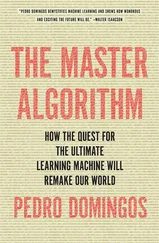At some companies the task of guarding against this sort of crisis fell mainly to engineers, working below decks, as it were. Executives might make the final decisions about what would be produced, but engineers would provide most of the ideas for new products. After all, engineers were the people who really knew the state of the art and who were therefore best equipped to prophesy changes in it. At Data General, an engineer could play such an important role. It was there for the taking. The president, de Castro, liked “self-starters,” it was said. Initiative was welcomed at Data General, and in the late seventies it appeared that the company had need of some initiative from its engineers. For Data General was in a bind. The firm had fallen behind the competition: it hadn’t yet produced the latest big thing in minicomputers.
Early in 1979 the businessman who told me about Data General’s problems and recovery back in ’73 hit upon a heroic metaphor for success in the computer business. “The major thing,” he said, “is avoiding the big mistake. It’s like downhill ski racing: Can you stay right on that edge beside disaster? At Data General we keep coming up with these things that are basically acts of recovery. What Tom West and his people are doing is a great act of recovery.”
Tom West went to work these days in freshly laundered blue jeans or pressed khakis, in leather moccasins and in solid-colored long-sleeved shirts, with the sleeves rolled up in precise folds, like the pages of a letter, well above his bony elbows. He expostulated with his hands. When dismissing someone or some idea or both, he made a fist and then exploded it, fingers splaying wide. The gesture was well known to the engineers who worked for him. Long index fingers inserted under either side of the bridge of his glasses signified thought, and accompanied by a long “Ummmmmmmmh” warned that some emphatic statement was near. He kept his car and his office as neat as the folds in his sleeves. He was decisive, and in his manner, exact. For all of that, he was vague. “When I first went to work, he was my boss,” an engineer said of West, “and it was amazing! Half the time I couldn’t figure out what he was saying.” He was not always this way, said one of his oldest colleagues, but sometimes you got the feeling that West expected you to be on his secret wavelength, and if you weren’t he’d be disappointed in you. If you weren’t, that was your problem. He didn’t have time to explain.
Seen at the wheel of his sporty red Saab, driving to work down 495, West made a picture of impatience. His jaw was set, he had a forward lean. Sometimes he briefly wore a mysterious smile. He was a man on a mission.
Into the world of the minicomputer a new thing had been born, a class of computer known as a 32-bit supermini. West said, with characteristic enthusiasm: “Everyone thinks they want one now. It’s an emotional issue. In fact, it’s kind of a fire storm.” As for the present state of affairs, sometimes he called it “a disaster.” Sometimes he would say, “We’re gonna get schmeared if we don’t react to VAX.”
A number of Data General’s rivals had produced 32-bit superminis, and the most important from West’s point of view was the computer that DEC had recently sent to market, a machine called the VAX 11/780. Data General, meanwhile, had not yet produced a computer of this class. Many people, including West, believed that they must do so, and in fairly short order. Partly it was a matter of keeping up appearances: customers get married to their computer companies in many different ways and they don’t usually want to get or stay married to a company that has fallen behind the state of the art. Besides, you had to grab a piece of the new market for the 32-bit supermini because that market was huge and growing fast; most observers agreed that it would be worth several billion dollars by the middle 1980s. You did not have to be the first company to produce the new kind of machine; sometimes, in fact, it was better not to be the first. But you had to produce yours before the new market really opened up and customers had made other marriages. For once they are lost, both old and prospective customers are often gone for good.
It had been painful for West and for a number of engineers working with him at Westborough to watch DEC’s VAX go to market, to hear it described as “a breakthrough,” and not have a brand-new machine of their own to show off. It had been painful for them to read in the trade press of the VAX’s growing success; VAX was beginning to look like one of those best-sellers that come along only once in a while. But by the fall of 1978 West had drawn around him a team of enthusiastic engineers and they were finally working on their own supermini, which they had nicknamed Eagle. A new computer, especially one of this class, does not get built in a month. Often it takes years to bring one to life. But it wasn’t too late, West was saying. Not if they could build this computer in the record time of something like a year. This was at last “the right machine.” This was “the answer to VAX.” At times West fancied that this computer would become the source of Data General’s continued ascent in the Fortune 500. “This is the second billion,” he said. His doubts he did not share widely.
Secretly, West felt afraid of VAX. DEC had published a great deal of technical literature describing VAX, and West had read all of it. Nothing in this material had made him feel that his team’s approach was inferior to DEC’s. In some engineers, however, reading does not constitute knowing. For them, touch is the first of the senses. And so, one holiday morning in 1978, when his team was already well launched on the building of its own machine, West went away from Westborough to have a look at a VAX for himself.
He traveled to a city, which was located, he would only say, somewhere in America. He walked into a building, just as though he belonged there, went down a hallway, and let himself quietly into a windowless room. The floor was torn up; a sort of trench filled with fat power cables traversed it. Along the far wall, at the end of the trench, stood a brand-new example of DEC’s VAX, enclosed in several large cabinets that vaguely resembled refrigerators. But to West’s surprise, one of the cabinets stood open and a man with tools was standing in front of it. A technician from DEC, still installing the machine, West figured.
Although West’s purposes were not illegal, they were sly, and he had no intention of embarrassing the friend who had given him permission to visit this room. If the technician had asked West to identify himself, West would not have lied, and he wouldn’t have answered the question either. But the moment went by. The technician didn’t inquire. West stood around and watched him work, and in a little while, the technician packed up his tools and left.
Then West closed the door, went back across the room to the computer, which was now all but fully assembled, and began to take it apart.
The cabinet he opened contained the VAX’s Central Processing Unit, known as the CPU—the heart of the physical machine. In the VAX, twenty-seven printed-circuit boards, arranged like books on a shelf, made up this thing of things. West spent most of the rest of the morning pulling out boards; he’d examine each one, then put it back.
Across the surfaces of a typical computer’s printed-circuit boards stand columns of small rectangular boxes, with metal legs descending from their sides. They might be some odd strain of caterpillar bred for mathematical ability. In fact, each of these boxes holds inside it another box, as it were—the intricate integrated circuitry known as a chip. Etched into the boards, among the housings of the chips, run many silvery bands; they make patterns like the tracks in large railroad yards.
Читать дальше











